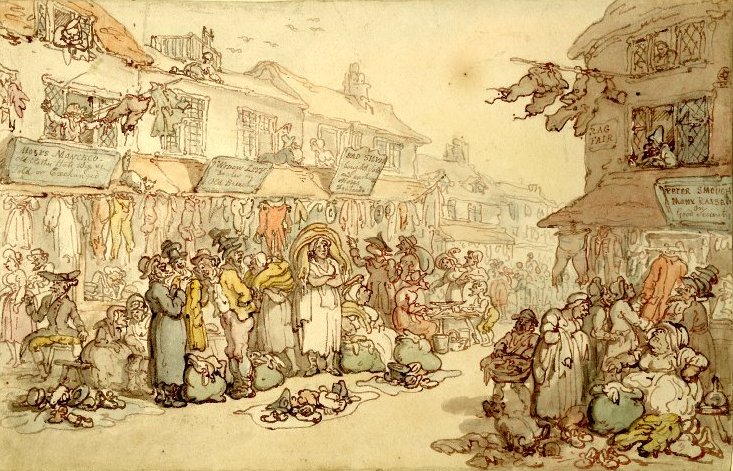When researching or collecting clothing from by-gone days, it is easier to find apparel of the upper classes. This is simply because the poor and working class wore their garments out, seldom leaving more than rags behind.
Cities in Europe had markets for second hand clothing from at least the 16th century on. London had markets in Petticoat and Rosemary Lanes that carried gently used items, especially frock coats and great coats, as well as extremely worn clothing. Houndsditch market specialized in threadbare attire for the poor. These markets were characterized by writers of the time as boisterous at best and crime ridden at worst. Some claimed most of the clothing for sale was stolen.
By mid-century, the journalist and reformer, Henry Mayhew described London street markets:
Some of the wares are spread on the ground, on wrappers, or pieces of matting or carpet; and some, as the pots, are occasionally placed on straw. The cotton prints are often heaped on the ground, where are also ranges or heaps of boots and shoes, and piles of old clothes, or hats or umbrellas. Other trades place their goods on stalls or barrows, or over an old chair or clothes-horse. And amidst all this motley display the buyers and sellers smoke, and shout, and doze, and bargain, and wrangle, and eat, and drink tea and coffee, and sometimes beer”.

The featured drawing is by Rowlandson of the Rag Fair at Rosemary Lane.

